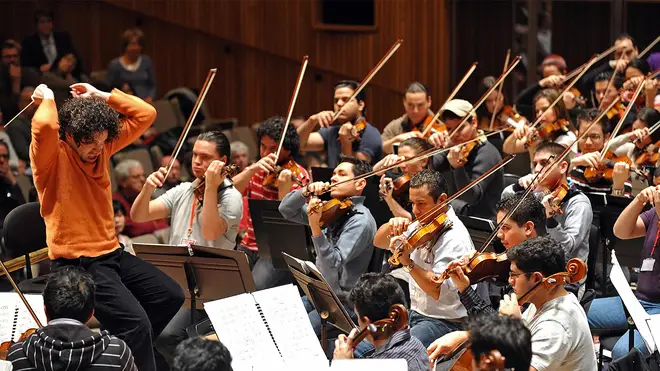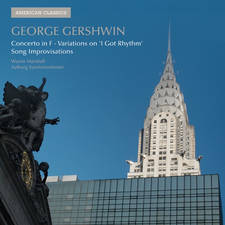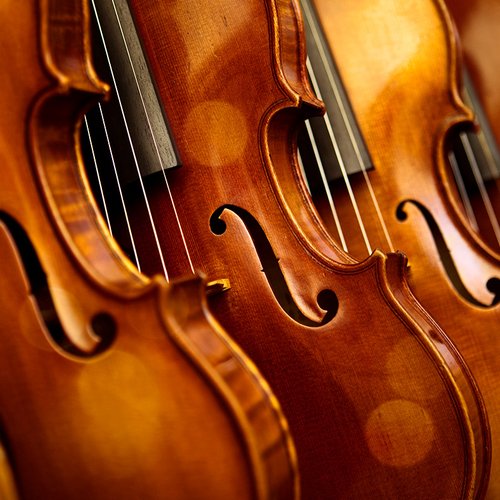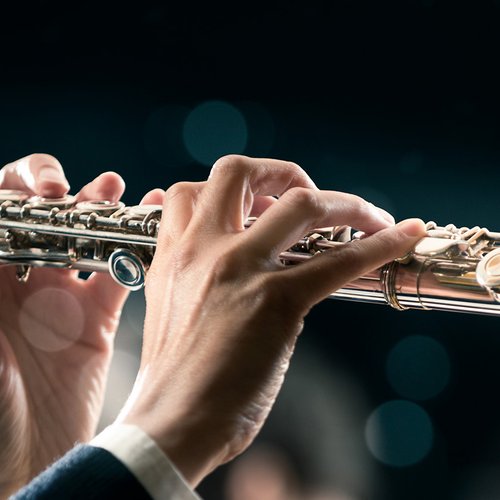Why do orchestras have so many violins?
21 November 2023, 15:26 | Updated: 21 November 2023, 17:41

Violinists sit front and centre in the orchestra, and they can’t help but steal the limelight. But have there always been so many violins in an orchestra? And why do they need them all?
Listen to this article
If you’ve ever watched an orchestra perform, you might have noticed a sea of violinists front and centre, bows rippling up and down in unison. They’re usually split into two sections – first violins and second violins – but all together they dwarf the other sections of the orchestra.
The string section of your standard symphony orchestra usually has around 10 first violins and 10 second violins, 10 violas, eight cellos, and six double basses. That’s 44 in total, which makes up almost half of an orchestra’s musicians.
But why are there so many of them? Well, the answer is fairly straightforward, but there’s an interesting history behind it too...
Read more: What’s the difference between a symphony and a philharmonic orchestra?
Why does an orchestra need so many violins?
Violins are well-suited to playing melodies, making them one of the most important instruments in the orchestra.
They’re the highest-pitched of the string instruments, their bright tone rising above the rest of the string section.
And unlike woodwind or brass instruments which rely on air and breath control, violins are played with a bow. Practically speaking, this means players can perform longer melodic passages with plenty of fast finger-work, without having to worry about lung capacity, or the stamina and strength of their cheek, lip and tongue muscles.

Phenomenal 25-year-old maestro Nicolò Foron wins international conducting competition
Why are there fewer woodwind and brass instruments?
Violins don’t just have to compete with the remainder of the string section to be heard. There are entire brass, woodwind and percussion sections they have to contend with, and those can get pretty loud.
If you’ve ever sat near a violinist or a trumpeter while they’re playing, you will have noticed that they represent two very different listening experiences. Most notably, over-exposure to a raucous trumpet player can do irreversible damage to your ears.
In fact, in professional orchestras today there are often perspex screens positioned in front of the louder sections to deflect some of the raw force of sound coming from them.
Many musicians also wear special earplugs, to allow them to hear their orchestral colleagues clearly whilst lowering the level of sound that can reach their eardrum, protecting their important hearing health.
Read more: Musicians must wear earplugs in orchestra to prevent hearing damage, study reveals
So, although violins have a bright, singing quality, they’re not particularly loud. Just as you need more upper voices to make sure they’re heard over the lower ones in a choir, there’s an ideal balance of two violins per woodwind or brass instrument in order to achieve a balanced sound.
Why do orchestras need two violin sections?
The first violin section normally plays the melody or counter-melody, while the second violins tend to play a lower harmony. The woodwind and brass sections work in the same way, except the numbers are far fewer.
Take the flute, for example. If you play first oboe, you’ll usually be the only one playing that particular line of music. But if you’re part of the first violin section, you have nine fellow violinists keeping you company on that line.
Simply put, having more violins creates a richer overall sound, and also helps them to balance out the louder instruments at the back of the orchestra.

French pianist Alexandre Tharaud plays aching ‘Concerto pour la fin d’un amour’ | Classic FM Live
Why do violins sit at the front of the orchestra?
Violinists’ front and centre location, the prime real estate of the orchestral layout, is partly down to audio balance reasons, and partly an aesthetic choice.
Having the violins seated in front of the wind and brass means that their sound travels to the audience’s ears that bit easier, rather than having to compete to be heard over the top of the louder instruments.
It’s also a question of style and spectacle. In the early-mid 20th century, renowned conductor Leopold Stokowski experimented with different orchestral layouts, on one occasion seating the strings at the back.
Suffice to say, it didn’t go down well. The board of the Philadelphia Orchestra were said to be horrified, and told Stokowski that winds weren’t interesting enough for the audience to watch, given all their bars of rest.
Read more: Why are orchestras arranged the way they are?
History has always favoured violins, anyway
Let’s be frank. The violins are undoubtedly the favourite child of the musical family.
Since the Baroque period, violins have more or less always been included in orchestral scores.
Orchestras specialising in Baroque music tend to be much smaller and more focused on string instruments. In fact, pre-1700s, the leader of the first violin section led the whole orchestra, instead of a modern-day conductor.
It’s a custom that exists through to today in the form of orchestra leader or concertmaster, who directs the orchestra in tuning and is even usually welcomed to the stage separately from the rest of the orchestra.
In Romantic and 20th-century music, as wind and brass instruments began to develop more rapidly into the versions we know today, composers like Mahler, Wagner and Stravinsky began to write for a wider range of orchestral forces.
One result of this was that, for performances of Mahler’s ‘Resurrection’ Symphony, or Stravinsky’s The Firebird, orchestras need to enlist the help of even more strings, to help balance out the louder wind, brass, and percussion instruments in the back.
Read more: The 4 eras of classical music: a quick guide

Mahler: Symphony No. 2 / Bernstein · London Symphony Orchestra
Is the violin still the most popular instrument today?
Today, the violin is an incredibly popular instrument and some of classical music’s biggest stars are violinists – think of Nicola Benedetti, Joshua Bell and Itzhak Perlman.
But did this all happen by chance? Perhaps if Baroque composers had decided the trombone (or ‘sackbut’, at the time) sounded better on the melody, we might be listening to orchestras with a very different make-up.
Or perhaps not. After all, it’s hard to imagine a symphony orchestra without those beautiful sweeping strings…

























